The Alumni Board is an elected advisory group of The Alumni Association of The College of Wooster. The Alumni Board participates in meetings and a variety of activities to support students, alumni, and the mission of the College. To learn more about the board, please see our Alumni Board Handbook.
If you are interested in nominating a fellow alumna/us to serve on the Alumni Board, please complete the online alumni leadership form or contact the Assistant Vice President for Alumni and Family Engagement by phone at 330-263-2533.
If you wish to contact an Alumni Board member, please email the Assistant Vice President for Alumni and Family Engagement, Steve Crawford.
Article I – Alumni Association and Alumni Board
- The Alumni Association (the “Alumni Association”) of The College of Wooster (the “College”) is an informal, unincorporated organization that includes all alumni, parents of alumni and recipients of honorary degrees from the College. An alumnus is defined by the College as any individual who has attended the College for one or more quarters or semesters and has passed the date of intended graduation.
- The Alumni Board is an advisory organization (not a fiduciary board) that provides leadership to and supports the Alumni Association in the accomplishment of its purposes, acts on behalf of the Alumni Association, and confers with and supports the College’s advancement, development and engagement functions.
The purposes of the Alumni Board are to:
- provide strategic and technical guidance to the leadership of the College in the areas of alumni, parent, and friend engagement to build a vibrant community of volunteers, active and informed participants, and strong advocates and supporters to guide the College into its future.
- assist in the effective engagement of current and future philanthropic and volunteer leaders who, in turn, will provide the resources and guidance the College needs to thrive as a distinguished independent liberal arts college in a complex and interdependent world.
- advise the Vice President for Advancement, the Director of Alumni & Parent Engagement and other appropriate officials of the College on programs, activities and outreach related to alumni and other stakeholders.
Alumni Board Members
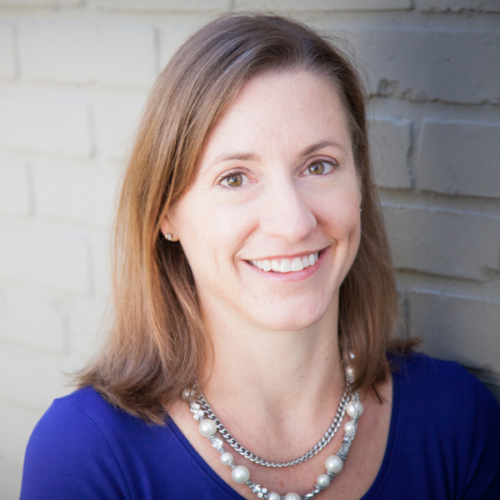
Betsy Anderson
2021-Current
WASHINGTON, D.C.
CAREER: Director of Development, Ford’s Theatre
TIED TO TARTAN: There’s no question my College of Wooster experience very much contributed to who I am today. Four years of liberal arts learning, mentored research, quality faculty, collaboration, a diverse community, and engaging opportunities, such as volunteer programs and a robust study abroad program, left me ready to begin my career and make a difference in the world. Today, I reflect back on my time at Wooster with nothing but appreciation and fondness.
SCOTS SERVICE: 25th Reunion Class President, 20th Reunion Committee Member, Scots in Service Volunteer, Fighting Scots Career Connections Volunteer
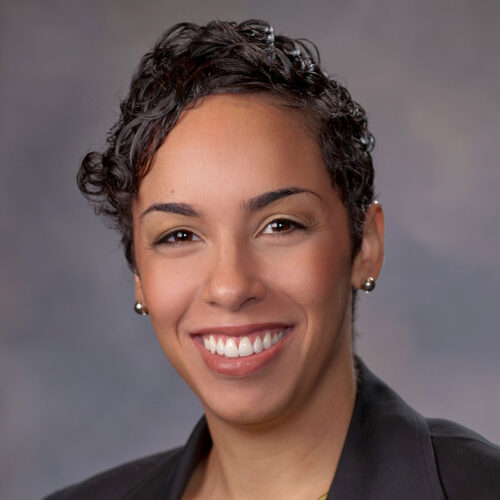
Gabrielle S. Caldwell Aryeetey
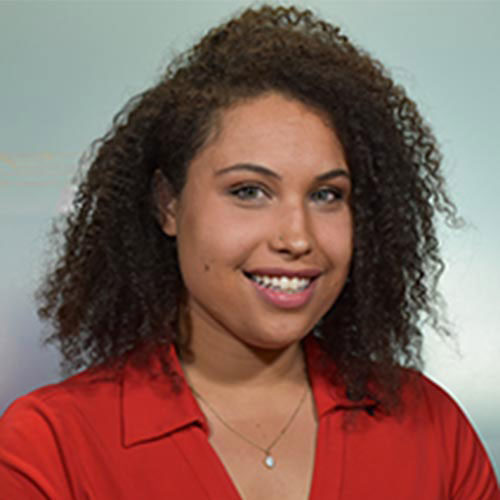
Zuri Baron
2022-current
Bozeman, Montana
Career: Senior Business Development Manager, T-Mobile
Scots Service: Reunion ambassador, Fighting Scots Career Network, Black Alumni Council, Legal Alumni of Wooster
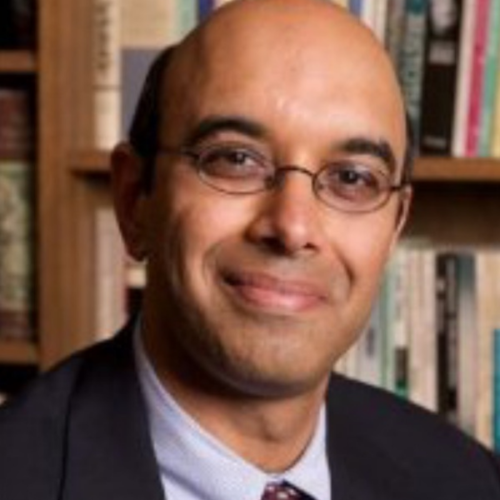
Sandeep Bhatia
2020-current
Shaker Heights, OH
CAREER: President, Om Consulting Group
TIED TO TARTAN: “What keeps me tied to Wooster is the friendships, experience, and appreciation of the opportunities.”
SCOTS SERVICE: Alumni Board, Alumni Trustee, Scots in Service
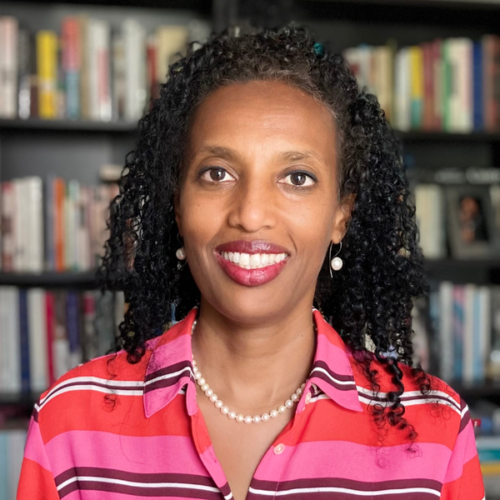
Mesky Brhane
2021-Current
Washington, DC
CAREER: Practice Manager, Urban, Resilience and Land Global Practice, East and Southern Africa, World Bank
TIED TO TARTAN: I made close, lifelong friendships while at Wooster that I carry with me to this day. In fact, during this year of the pandemic, regular zoom calls with a group of my Wooster classmates helped me maintain a social life. Periodically attending reunions is another way I remain connected with the college. The year of my 20th reunion, I was living in Jerusalem so flew back to the US just for that reunion weekend. It really was one of the most memorable weekends of my life….
SCOTS SERVICE: Alumni Board, Student Mentor

TeQuion Brookins
2022-current
Southfield, Michigan
Career: Founder, Bid4Impact; Founder/COO, Minority Freedom Community Fund; President/CEO, Sani360; Principal Consultant, TeQuionBrookins.com
Scots Service: Black Alumni Council, Black Student Equity Fund
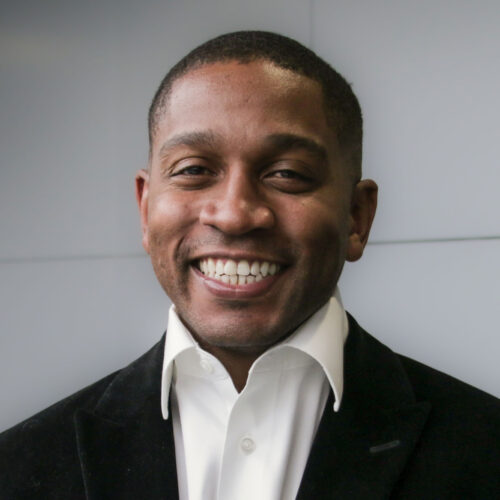
Ramses Clements
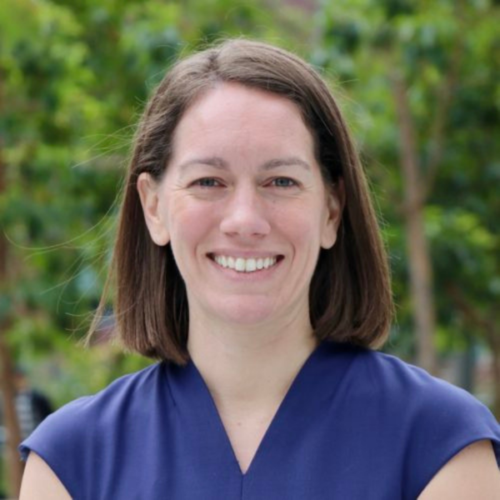
Margaux Day
2021-Current
Washington, D.C.
CAREER: Policy Director, Accountability Counsel
TIED TO TARTAN: “I’m grateful for the opportunities and challenges presented by a Wooster education and am honored to support the College’s commitments to its brilliant students. Wooster faculty, staff, and fellow students provided me with the inspiration, mentorship, and encouragement to explore academic interests that connect directly to my career. My I.S. evaluated the success of international aid for HIV/AIDS treatment, and now I work to hold international financial flows accountable to the communities they impact.”
SCOTS SERVICE: Alumni Board (2010-2013), Career Connections Adviser.

Dan Griffis
2022-current
Los Angeles, California
Career: Founder/President of Global Partnerships for Oak View Group
Scots Service: Campus Speaker, Alumni Weekend
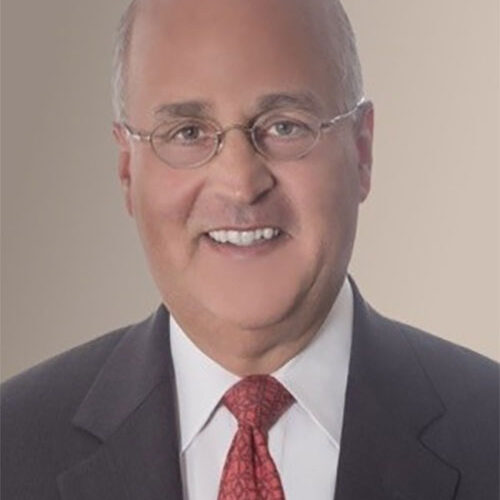
Eric Van Heyst
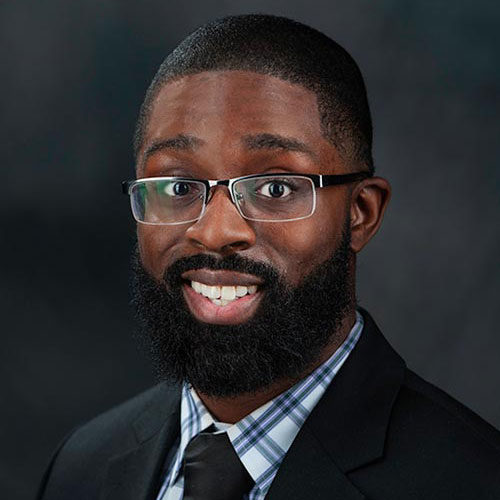
Peter Jeffy
2022-current
Kent, Ohio
Career: Project Director of the McNair Scholars Program, Kent State University
Scots Service: Black Alumni Council, Campus Speaker
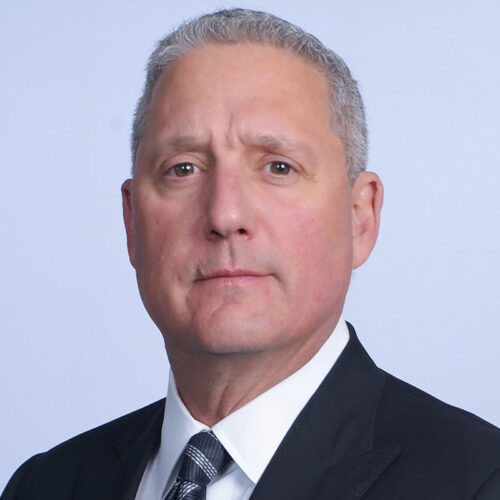
Craig Lombardi

Matt Long
2022-current
Wooster, Ohio
Career: Attorney, Critchfield, Critchfield & Johnson
Scots Service: Fighting Scots Career Connections, Pre-Law Advising program, The Wooster Fund
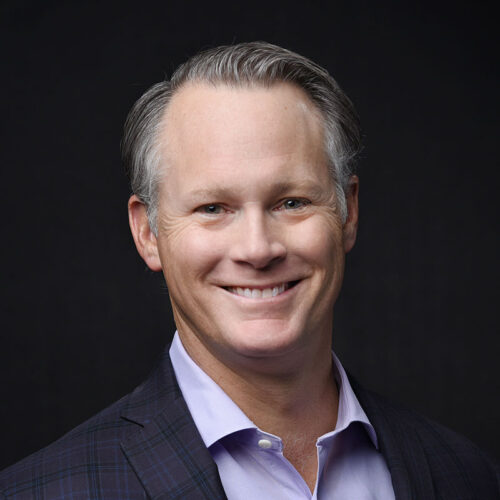
Tate McCoy
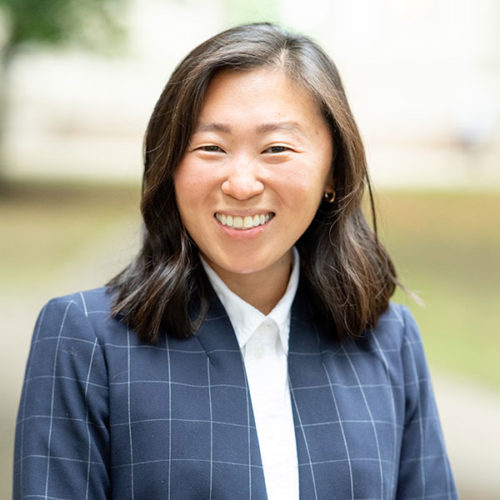
Meret Nahas '10
2022 – current
Weston, Massachusetts
Career: Senior Associate Director of Development for External Relations, The Rivers School
Scots in Service: GOLD (Graduates of the Last Decade) Trustee in 2017 and 2018, Class President, Fighting Scots Career Connections network advisor, The Wooster Fund
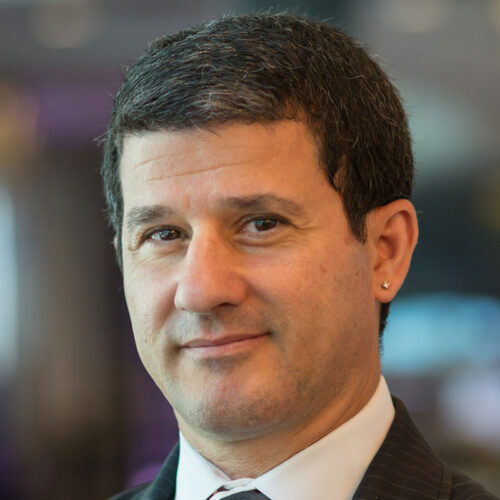
Yalman Onaran
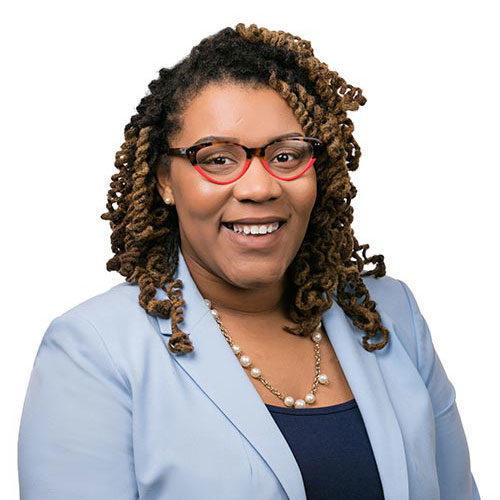
Bria Price
2022-current
Atlanta, Georgia
Career: Manager of College Success, Achieve Atlanta
Scots Service: Black Alumni Council (class secretary)
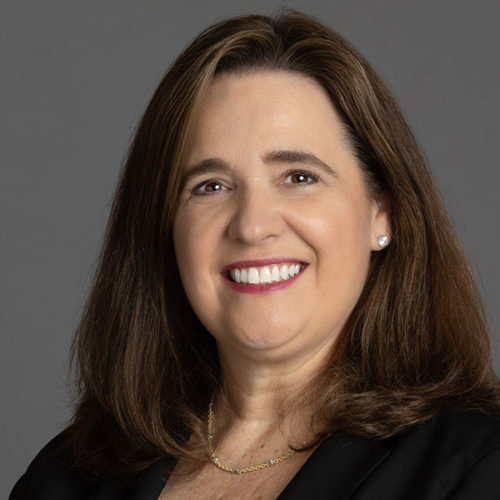
Lisa Skeens
2022 – current
Libertyville, Illinois
Career: Vice President of Global and Regulatory Affairs, Pfizer
Scots in Service: The Wooster Fund, worked to establish the Wooster Friends for Life Scholarship in 2020 with a close group of friends from Wooster, Scot Band alumna, Epsilon Kappa Omicron alumna, Alumni Board
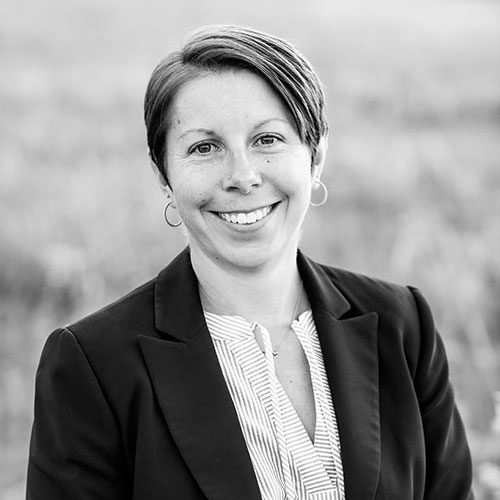
Ali Sloan
2022-current
Career: Senior Project Geoscientist, Centennial Resource Development
Scots Service: Alumni Event Host, Outstanding Young Alumni Award (2014)
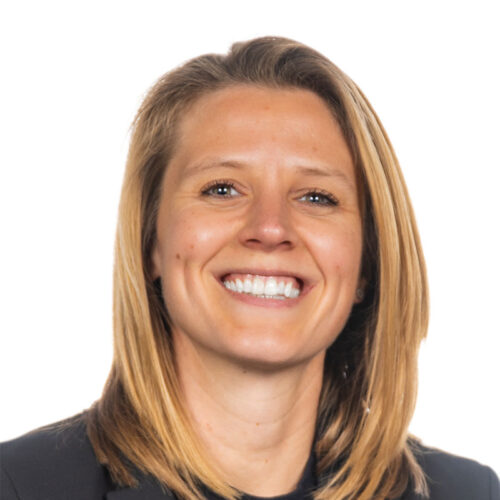
Angie Triplett
2019-Current
Seal Beach, CA
CAREER: Sr Program Engineer, Launch Systems, Operations and Development, The Aerospace Corporation
TIED TO TARTAN: “The connections made while at Wooster run deeper than most of my friendships. We all went through the same hardships and sleepless nights to think outside of the box and produce a document that contained our blood, sweat and most definitely tears. Wooster alumni have an eagerness to challenge limits, but in an equitable manner. We may not agree on everything, but we welcome all people and opinions. Wooster gave me the confidence to engage in discussions and to not be ashamed to differ in opinion, but to voice how I feel and why it should be heard.”
SCOTS SERVICE: Alumni Board, Reunion Ambassador, Alumni Admissions Advocate
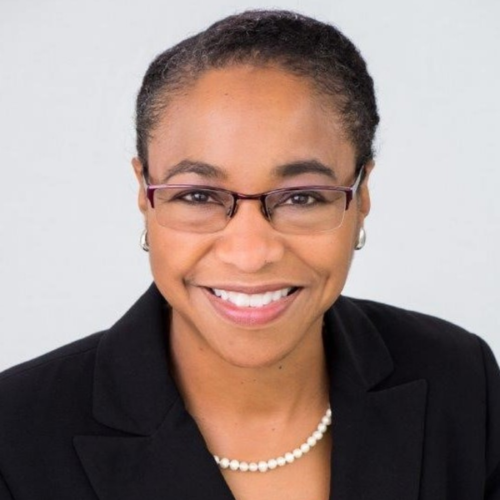
Bernice Walker
2021-Current
Cincinnati, OH
CAREER: Supplier Engagement and Diversity Manager, Duke Energy
TIED TO TARTAN: “I had a good experience during my years as a student and received an excellent education. I made life-long friends and created great memories. I was involved in a variety of activities and am proud of my affiliation with the College. My service to The College of Wooster is a way to show my appreciation.”
SCOTS SERVICE : Class President, Reunion Ambassador, Alumni Board (2007-2010), Alumni Trustee, Scots in Service, former Admissions Advocate and member of Cincinnati Regional Leadership Group
History of the Alumni Board
To assist you in understanding the history and long commitment of Wooster alumni to the College it is helpful to understand the history of the Alumni Association. What follows are excerpts from Lucy Lilian Notestein’s (graduate of 1911) Wooster of the Middle West, Volume I and II.
Wooster of the Middle West, Volume I, pg. 73
On this third commencement, too, there was the first attempt at an alumni organization. The members of the classes of 1871 and 1872 held a meeting, elected officers, and determined on a loose form of organization with annual meetings at commencement time.
This commencement, however brilliant, was marred by Dr. Lord’s resignation. He had resigned indeed at the end of the second year, but the trustees had persuaded him to stay. The marked increase of students at the beginning of the third year had made it plain that the new college was making its place in the synods of Ohio. Yet no additions to the endowment had been made. The trustees waked to the appalling fact that a great deficit had eaten out a large slice of the original endowment. In the meantime, a financial stringency almost amounting to panic was beginning to grip the country. President Lord had seen this situation developing yet felt helpless to avoid or cure it. Worry over it aggravated an illness which had been growing upon him. When June came, his health made the resignation inevitable. After five years of rest, he regained his health and again took up work elsewhere for several years. He was a shining example of the cultivated gentleman devoted to scholarship. His chief limitation was on the side of financial management. In the three years he gave to Wooster he did nevertheless a very necessary work in guiding the college to a place of assured dignity among the colleges of the State. His resignation even this second time was not at once accepted. During the summer, however, the trustees regretfully accepted it, and proceeded to the task of finding a new president. Dr. Lord made his farewell address to the college at the time of the inauguration of Dr. Taylor on October 7, 1873 and received on that day as the first official act of the new administration the degree of Doctor of Laws. In this address he made a comment on education which was long remembered:
Within these walls, the young woman on the same terms and with the same means as the young man, may strive with him for the highest training and the noblest honors. It may not be improper for me to say that this fact, more than any other one, availed with me, to undertake at my advanced period of life, the duties of the first president of the University of Wooster. For years past, my convictions, relative to what is called the woman question, have been definite and strong, and though it would be wholly irrelevant to expatiate on the general subject here…I hold to the perfect equality of man and woman in law, and I fully accept all the legitimate consequences of this view. These consequences would bring, I think, great social and civil benefits.
Wooster of the Middle West, Volume I, pg. 163
The organization of alumni, begun in 1873, had had a fitful existence. Still, every June for ten years had found a little group of them gathered in the library for the meeting. In June 1884, Dr. Scovel’s first commencement, an unusual number had come back. They had wanted to see Wooster’s new president and to take stock of him themselves. That Tuesday morning there was begun the effort toward the endowment of the alumni professorship. During the next year the Central Alumni Association of the University of Wooster was incorporated under Ohio laws. Soon thereafter a place was made in commencement week for an alumni dinner. It was held at one o’clock on Wednesday in the Music Hall. In the evening an alumni oration was regularly given in the chapel. Later the oration was dispensed with, and a supper instead held in the armory. Gradually this banquet was to take its place as the central feature of all the festivities of commencement week.
Wooster of the Middle West, Volume II, pg. 210-222
In his first year Mr. Wishart was moving cautiously, though definitely and in the right direction. The students and faculty he had already, as it were, in his pocket. But there were others. Within the first few weeks of his coming to Wooster he had announced to a group of Presbyterian ministers in Cleveland that the college must have two million more in endowment for salaries if it was to move ahead. This he had reiterated at his inauguration.
Yet he knew as well as he knew his own right hand that to be successful in any campaign for money, he must have the prior backing of Wooster’s alumni; otherwise, his work would be just as futile as the cow’s jumping over the moon. He knew also from the persistent prodding of some of the old alumni, almost from the moment of his arrival on the scene, that these men were still bitter over the ousting of fraternities in 1913.
At the February meeting in 1920 he had asked his trustees for a more closely-knit alumni organization and for an executive alumni secretary, full-time. Wooster had had a Central Alumni Association since the early 1880s. Once a year it met and was attended by those alumni who came back for commencement. They listened to a report about the college, made nominations for alumni trustees from the floor, attended their class reunions at noon, the alumni banquet in the evening — a kind of glory meeting where the president made a speech and sometimes interesting announcements; and then they went home for another year or five years or maybe ten. The rest they left to an executive committee who sent out the ballots for the election of the trustees, gathered them in when they were returned, and notified the college officials of the results. Otherwise, the alumni had little contact with the college, direct or indirect. During their life at Wooster the fraternities and sororities, it is true, had furnished much of this contact through their continuing organizations. It was true, too, that The Wooster Quarterly through the years had been a binding force, but it was by subscription and only about a fourth of the alumni at any one time took it. There was no disaster pending–the president devoutly hoped–no great dramatic moment that would of itself inspire the gathering of the clans around the college of their memories.
They needed someone who would by letters and personal contact and whatever means he could dream up make them feel that they still belonged here, that the college needed them, someone who could supply enthusiastic leadership as a dean did for faculty and students.
The alumni needed to be told, not just once but frequently, of the needs of the college, of its frustrations and of its triumphs. There was a place waiting for a man who could weld the diverse elements within a far-flung alumni body in a common loyalty. The trustees considered and authorized the seeking of such a person.
Through all that long winter and spring of 1920 Emeline McSweeney had been preparing the copy for a new alumni catalogue, the first since 1916. It was needed, for the war had intervened, and not only had four more graduating classes been entered on the rolls but many of the old addresses had been changed. Now on June first of 1920, the copy was ready, the rolls themselves, the geographical and alphabetical index, the lists of former faculty, trustees, and officers of the college. They had used this list in sending out the 3500 invitations to the Jubilee Commencement.
It was a great commencement in terms of alumni participation. Of the thirty-four students entering in Wooster’s first year, nine were back. Mrs. A. E. Taylor, widow of Wooster’s second president, was there, still gay, still beautiful, still with the grace of an angel. Elsie Scovel Barnett, daughter of Sylvester Scovel, sent a telegram. President Whit had come. Louis E. Holden, who recently became president of James Milliken College, was busy with his own commencement there. Paul Shorey, head of the Department of Greek at the University of Chicago, made the commencement address. At the alumni business meeting discussion centered on how to finance the new office of alumni secretary authorized by the trustees but with no provision for its expenses or the salary. Pledges toward expenses were then solicited and a life membership fee in the Association set up. 365 pledges were made. These amounted to about $3000 for the immediate needs of the Association and $2000 in life memberships which were to become an endowment fund, from which only the interest could be used. With these pledges as an incentive the executive committee went about hunting their victim. It would be his responsibility to develop so strong an esprit de corps among the alumni as to assure his own salary. So, he was told, at least when interviewed in the summer by the president of the Alumni Association, John McSweeney, Jr., and by the treasurer of the college when he arrived on September 7, 1920, to begin the job.
The choice had fallen on John D. McKee, ’17. He had come back from the war, had married a classmate the year before, Ola Weygandt, and had settled in business in Barberton. He was young, enthusiastic, and energetic, and he had the advantage of having had his whole Wooster experience in the post-fraternity era. Though his background, save for his war service and the year in Barberton, had been Smithville and Wooster, he had a generous and amiable disposition which he would need through the years in fending off complaints; and he was a go-getter. In college, he had been outstanding, an able debater, winner of a Fackler medal, a member of both the Congressional and the Toastmasters’ Clubs. He knew something of organizational procedures and could stand on his feet and speak.
In accepting the appointment, he took a gambler’s chance, betting on himself and on the alumni. He had been in Wooster for the Jubilee commencement, and had attended the Denison-Wooster game, which Wooster won, the senior class play, the alumni business meeting, and the banquet in the evening. There he had witnessed, and shared, the enthusiasm of the old grads and the young for the new office of alumni secretary. He had been pleased with the president and had been thrilled with the announcements of that evening. A campaign for a million dollars of endowment was being launched, for professors’ salaries primarily, had indeed been already launched for one morning in the spring Mr. Wishart had been called out of bed by the long- distance telephone. It was E. P. Douglass, ’77, of McKeesport, Pennsylvania, one of his trustees, offering him out of the blue the first $25,000 toward the new endowment fund. Wooster had made an appeal again after so many years to the Rockefeller General Education Board. It had offered in answer $250,000 provided Wooster could complete the million in cash and guaranteed pledges by June first, 1921. To the alumni of an older generation, this seemed indeed like old times. In nine years, the growth of the college in attendance and in faculty had been marked; in endowment there had been little or no change. The need was urgent.
When John D. — for that became his name to everyone thenceforth– reported into President Wishart that September day of 1920, he was greeted warmly, but told that yet there was no office available for him. Temporarily he was set down in the trustee room adjacent to the president’s office in Kauke Hall, without instructions, without assistance, without any office equipment, save the table and the chairs in the room. He soon discovered, however, that the proof was coming through for the new alumni catalogue. This he must read at once. Correcting proof was fortunately no new trade for him. He had been editor of The Index in his day in college.
Soon he was informed that it was now his chore to mail out the ballots for the election of the alumni trustees nominated in June. This he did, gathering in the answers and reporting to the executive committee of the Alumni Association. With a rented typewriter he next sent out penny postal cards to all the 3,500 alumni and former students listed in the forthcoming catalogue, inviting them to a Homecoming on October 23. Before doing so, however, he consulted with the Student Senate, Coach Boles, and others, and arranged that a special section in the bleachers should be reserved for the alumni that day, that President and Mrs. Wishart would hold open house after the game, and that Mr. West of the Department of Oratory would be staging a rollicking farce, at the Opera House for the occasion. Evidently the invitations had had the proper touch, for on the great day 300 alumni were on the campus, and John D. was moving among them like an old hand. The game that day was with Oberlin, Wooster’s perennial enemy which had not been defeated for two years. Their team came accompanied by 500 students, a band, and cheerleaders. Four thousand persons, it was estimated, were on the field to watch.
The Board of Trade band played for Wooster. Captain Walker, according to The Voice, did that day a “sensational job of tackling.” Wooster won 19-0 and the shouts of jubilation could be heard for a mile around. The Cleveland Plain Dealer reported that Wooster had won “because it had by far the best team.” There was still another victory, however. Before the big game, had been the 4 1/2-mile cross-country meet with Oberlin. Wooster won this too. Her top runner came in 27 minutes and 3 seconds. In the evening at the Opera House before the curtain rose on “Polly in Politics” several students with special talents entertained with readings, a violin concerto, and vocal numbers. All in all, it was literally a day and a half.
In the meantime, Mr. McLaughlin, assistant treasurer, who was taking over more and more the duties of a non-existent business manager, studied where to put the alumni secretary. Before many days after his arrival carpenters were at work on the second floor of Kauke Hall dividing and redividing the old art room, to the left as one climbed the stairway, giving a part to John D., another to the registrar’s office as an addition. John D.’s room was #214, and the Alumni Association was blazoned on its door. Then came the task of collecting furniture. A table was found in the basement of the library and several old chairs in Irvin Hall. Jesse McClellan pulled out from somewhere some old cabinets for files; Chalmers Martin lent a golden oak desk and chair. A telephone was put in.
Two tasks, John D. knew, now awaited him, that of keeping records of names, addresses, death dates, and the other more pleasant one of keeping the alumni in touch with Wooster and each other, of building up their group and individual loyalty to the college. This perhaps might best be done in two ways: by enticing them back to the college on special occasions and by cultivating alumni groups wherever enough lived to allow for some sort of regular get-togethers, even though these might be only once a year. He had already ascertained that a few local alumni clubs were or had been in existence off and on, notably in Cleveland, Chicago, New York, Pittsburgh, Cincinnati, and Columbus. In Cleveland the men had a regular luncheon monthly in the dining room of the Chamber of Commerce. This he and Mr. Wishart attended in late October. In November they went to alumni dinners in both Boston and New York. On the way John D. made a point of stopping in the alumni offices at Massachusetts Institute of Technology, at Yale and at Princeton to get ideas on how these were run. He had no compunctions about asking questions, for Wooster had been a charter member of the Association of Alumni Secretaries since 1913, even though it had had no secretary. The whole movement was new, for until Wooster came in, Ohio State was the only college in Ohio with a functioning secretary.
In early December the alumni catalogue came out. It was mailed to all alumni save those in Wooster. The college refused to pay the postage for those here at home. “You can get a little express wagon,” said Jesse McClellan to John D.,” and deliver them yourself on Saturday afternoons.” This he did. Anyhow the new catalogue made each community aware of the other Wooster men and women in its vicinity, speeded up and simplified the alumni organization meetings in Ohio and elsewhere. In January Wooster clubs in both Youngstown and New Philadelphia were organized. Toledo alumni met at Grace Smith’s invitation at her Tea House in the suburbs and effected an organization. So gradually the flame spread. Indeed, in the winter John D. made a trip to the south and southeast in Ohio organizing groups in East Palestine, East Liverpool, Bellaire, Cambridge, and Mt. Vernon. His budget wouldn’t allow him to go far afield. In the first few months of 1921, fifteen meetings of Wooster alumni were held. In Wooster 125 persons came to the meeting at Memorial Hall. In the annual meeting in New York at the Waldorf in the spring, more than 100 were present. Soon some of the clubs began playing host to the Boys’ and Girls’ Glee Clubs on their trips, arranging dates for them at the local Presbyterian churches, and entertaining them for dinner or overnight. Sometimes they were asking for special guests in addition to President Wishart, Earl Dunbar, Wooster’s orator, for instance, or Coach Boles and possibly a member or two of his team. (Coach Boles was known now all over the state not just by Wooster men but by all sports fans.) The Wooster women of Cleveland had a dinner honoring Mrs. Wishart and Mrs. J. M. Vance, director of the Girls’ Glee Club.
Of course, all this enthusiasm had been given impetus by the campaign for endowment already under way. The college in the meanwhile had brought in F. N. Riale, ’81, of the General Education Board of the Presbyterian Church, to assist in raising money. The college was little more than a name in most of the 51,000 Presbyterian homes in Ohio. It was time for Wooster to rouse itself to the dramatic possibilities in its own everyday life and to let the people of Ohio, particularly the Presbyterians, know what of real interest was going on in this small but active college. To be sure, Wooster had made one or two attempts at getting more publicity yet had come to little. Happily, the Rockefeller Board had consented, because of the serious financial depression, to the moving of the deadline for the completion of the campaign to June of 1922; that game time for beating the bushes near and far for contributions. The trustees had allotted $250,000 to the Synod as its share and had assigned to the alumni an equal amount. There was need of a news bulletin to apprise the alumni from month to month not only of their responsibility but of how they were meeting this. On April first of 1921, consequently, the first issue of The Wooster Alumni News appeared. It was edited by John D. McKee, under the supervision of the Executive Committee of the college, was a four-page, three-column folder on inexpensive paper, and carried important items about the college, administration, faculty, and students, the campaign, the alumni, and the alumni clubs, as well as an editorial or two. It went out to all alumni and former students without charge. This first issue also carried a letter from President Wishart in which he told….. of a man who had been very, very sick and whose room had been literally filled with flowers from affectionate friends. There came a time when the sick man. approached convalescence and demanded sustenance. The flowers kept on coming, however, and the old colored butler, with an eye to the psychology of convalescence, said to one of the callers, “de time for flowers am past. De time for grapefruit is done come.”
So, in alumni relations. In the last two years alumni have had a lot of pleasant things to say and we have welcomed them…………………………………….. But I do not mean exactly that we do not relish the flowers and seek all of them you must give, but I do mean that the time for definite activity has arrived. The old institution needs more than flowers. It demands sustenance. It seeks the active cooperation of all the alumni toward the building up of its resources–academic, physical, and financial. Now or never is the period of “grapefruit.” I believe the continuity and activity of every Wooster alumni chapter will depend on its assuming a definite responsibility for a fixed objective and getting every member to work upon it. Our supreme need is your supreme opportunity. We are depending on you.
Charles F. Wishart March 29, 1921
The continuity of Wooster’s alumni clubs did depend on their having work to do, some focal point of interest and activity. In the past in several instances, clubs that had started with apparent enthusiasm had withered away. The new alumni secretary had indeed been busy this year in a work of resuscitation as well as of acting as mid-wife to other clubs at their birth.
Reminiscences were delightful at reunions but offered no incentive toward continued existence. Now the alumni had something real toward which to strive.
In the spring the executive committee of the Central Alumni Association met again taking stock of the situation thus far. Expenses had been heavier than expected during the year, and pledges toward these had fallen behind. It seemed wise, therefore, to establish annual dues of $5 and life memberships of $50. The new alumni secretary had done well. Not only had he seen the alumni catalogue through publication and inaugurated a news bulletin, but he had compiled files- – (three sets of them on cards) on all alumni and all former students for whom he had or had been able to find exact information. He had written personal letters to forty-three of the classes, had looked after arrangements for Homecoming, and was planning a dinner in June for all class secretaries at which he intended to outline their responsibilities and opportunities.
Early in the spring he was already making sure of the alumni arrangements for commencement, an occasion to which he looked forward with some trepidation. There would be a hospitality committee to meet all trains, rooms provided, if reservations were made ahead, in dormitories and if necessary, in private homes. A thousand details confronted him as he thought of plans for the reunion classes and the alumni banquet. Besides, he must justify his existence by his report at the alumni business meeting.
When it was all over, however, he felt that something new in alumni relations was shaping up. At the business meeting of the Association, a temporary alumni council had been set up consisting of the executive committee of the Association and one member from each of the existing alumni clubs. Several new ones had been recently added, Los Angeles, Seattle, Mansfield, Canton-Alliance, Lorain, and even a club of four or five in Salt Lake City. This gave the Association more national scope. A committee chaired by Elias Compton, ’81, had been appointed to draft a new constitution. One of the aims of this committee was to find a procedure for the nomination of alumni trustees. They were interested, too, in the possibility of using alumni clubs to discover and direct promising students in their local communities toward Wooster. The Association voted that a brochure showing Wooster, at its best of course, be got out for use in high schools, and that The Voice also be sent to a selected list of these. They had recommended also that five alumni or alumnae representing different fields be brought to the college every year for life-work conferences with students. Of course, the expenses of the past year were reviewed, and the fact recognized that to function at all adequately the Association should have for the next year a budget ranging from $5000 to $6000. The class secretaries, as John D. had hoped, had meet and effected their own organization.
The college had ended its year (1920 – 1921) with an accumulated deficit of nearly $45,000 of which $15,000 had been incurred during the past year. However, preparations for the campaign were well in hand, and at the end of June the new campaign manager with his dramatic flair was on the ground. He was R. Arthur Basham, Welshman and ex-coal miner, immigrant to Canada (with ten dollars in his pocket), and member of an ambulance unit in the Canadian Expeditionary Forces. He had managed somewhere along the way to acquire a college diploma, a Reverend in front of his name, and a wife. He had been an assistant in a church in New York City, a pastor in Buffalo and Columbus, had raised half a million dollars in four months for Wesleyan College in West Virginia, and had recently been employed by the Presbyterian Board of Education to raise money. He was in short, a kind of whirlwind; he moved so fast one could hardly trail him save the smoke from his large pipe. When he came, the total pledged toward the three quarters of a million yet to be raised stood at $84,000. It had happened One May Day in chapel that faculty and students had been so carried away in a burst of revival-style enthusiasm that they had pledged $27,000, more than they had any reason to believe they could ever pay. There had been miscellaneous gifts totaling $33,000 and the town had thus far loyally come through with pledges of $24,000. In three days in July Mr. Basham raised this latter figure to $53,000. It was a brave beginning. But his major work right now was really that of planning. Of course, there were minor indications here and there of activity. A few more alumni clubs were formed; others held summer picnic meetings, attended by Mr. Wishart, John D., and a faculty member or two. One alumnus sent in a check for $10,000. Ten persons would be working for Wooster in the churches of Ohio. Mr. Wishart and Mr. Basham would be seeing the possible large givers. The alumni would be divided into forty districts, each with its chairman. John D. would be giving most of his time during the year to the development of this work. To cover the existing deficit and the necessary expenses of the campaign, $100,000 over and above the million-dollar goal would have to be raised. By the first of October a total of more than $150,000 in pledges had come in, exclusive, of course, of the Rockefeller challenge fund.
In October of 1921, there was another Homecoming, another game, with Case, attended by some 300 alumni, another reception at the Wisharts’, and another play in the evening, given by the Student Senate at the Opera House. This time, however, the Cleveland alumni had brought down with them for their first visit to Wooster 200 members of the Cleveland Presbyterian Union. Arrangements had been made with John D. that these visitors were to be given lunch at Kenarden, would then be taken on a brief tour of the college and the town, would have seats reserved for them at the game, and would afterwards be given a snack at Holden Hall before their return to Cleveland. This was but the beginning of many such visits to Wooster through the years.
At Homecoming this year, the temporary alumni council held its first meeting, with fourteen members from Wooster clubs in attendance as well as the executive committee. They approved the observance of Wooster Day on December 11, the anniversary of the fire and of the subsequent dedication of the new Wooster. They recommended that on this day Wooster clubs everywhere meet in an expression of their common loyalty. In this its first year, 1921, meetings were held on that night in sixteen cities or towns, Wooster Day was recognized also in the services of 200 Presbyterian churches.
Mr. Wishart on the eleventh had been speaking in Cleveland at the Church of the Covenant — he spoke every Sunday at some church. A few days before, Earl Dunbar, ’21, had been chosen from among forty-one candidates as the Ohio Rhodes Scholar to go to Oxford University. It was only natural for Mr. Wishart to mention this and to go on to tell something of the story of Dunbar, the boy from Tennessee, who had come to Wooster equipped, financially speaking, only with a scholarship for his freshman year and $50 in his pocket. During college he had won one prize after another, one oratorical contest after another, until in the spring of 1921 he had come back from South Dakota, winner of the interstate, intercollegiate oratorical contest. To put himself through college he had done almost everything, had served as janitor in Kenarden Lodge where he lived, had waited tables, had sold shoes downtown, had pitched hay for a farmer, had scrubbed floors, and peeled potatoes. One day in his senior year, to encourage other boys to take the risk and come to college he put down in the form of a letter a friend how he felt about taking such a chance. He ended his story in this way:
“And it hasn’t been a grind. I’ve had time to play a little tennis, a little baseball, a little football. [Actually, he played on the winning Varsity team.] I’ve gone out for debate every year. [He had been on one of the college teams.] I’ve had my share of dates. I’ve been to almost every class party. I was president of my class one year, and even had time to dunk the freshmen! It hasn’t been a grind, but a glorious game and one that pays. And I’m glad now that I didn’t have any money when I came to Wooster, for when I walk down the aisle next June and get that diploma, I will know that it is something that I have worked for.”
He hadn’t mentioned that he had been a member also of the college Congressional Club. After the service Mr. Wishart received various pledges to the college endowment fund and along with them a note from a woman in the congregation asking him to call on her the next day. When he appeared, she said not a word about his address, but only “That was a wonderful boy you spoke about yesterday”; whereupon she handed him, for the college, bonds amounting to $50,000. It was in the Severance tradition, and she was a Severance, Mrs. F. F. Prentiss.
In general, large givers in this campaign had been few. The after-the-war depression had shaken the confidence of many. Men and women were holding tightly to what they had. At their midwinter meeting the trustees had taken note of this fact and offered as individuals to go out to try to shake loose money from various potential givers. They had added strength, too, to their organization by the election of two new Cleveland trustees, A.C. Ernst and Whitney Warner of the W. H. Warner Coal Company, director of The Union Trust Company and of The Morris Plan Bank. By the first of February 1922, the total, including the initial challenge fund and nearly $117,000 from alumni, stood at nearly $600,000. By the first of April this had risen to nearly $700,000. By May first another $100,000 had been added.
An every-member drive among the alumni was set from May 15 to June 1. The alumni issue of the college Bulletin of May first carried an editorial headline: “YOUR ALUMNI DOLLARS — NO MATTER HOW MANY YOU CAN SPARE — MUST BE PLEDGED.” And it quoted from the speech made by Senator John Sherman at President Lord’s inauguration:
If you would have this institution of learning rise from the stone and brick in its foundation to the ideals of its founders…if you would have it the true Alma Mater of thousands…………………………………………… who will look back to it as the foundation of their usefulness… ? you must by study and persistent efforts endow it amply, so that literature and science may here have their ablest Professors.
By June first the alumni had raised $214,000 of their quota. John F. Miller, Class of 1881, had offered to pay the last $10,000, yet they still had a considerable sum to raise. During the first ten days of June, however, alumni gifts came in at the rate of nearly $1000 a day. This was not enough. The campaign had been scheduled to close on commencement day, June 14.
A $50,000 general drive in Wooster and Wayne County was consequently arranged from June 5- 8, with Thomas Prosser as chairman. Eighty canvassers worked steadily for the three days. At the dinner meeting on the night of the eighth they were several thousand short. When this was announced several men led by Donald Dickason rose and pledged the difference. Wooster had come through again. In the meantime, $16,000 more had been found in Cleveland.
By Tuesday morning of commencement week, alumni day, nearly everyone who arrived for the meeting of the Alumni Association was on tenterhooks. The announcement soon was made that the total now stood at $1,064,134.04. The challenge fund and the clearing of the deficit were covered. Yet there remained almost $36,000 before the goal of $1,100,000 would be reached, and the expenses of the campaign also covered. It was in a mood of hopefulness that the Association that morning transacted business. The continuation of Wooster Day was approved, the Dix plan of class reunions also. Dues were reduced to $3 annually, $5 for husband and wife. The budget for the alumni office for 1922-1923 was set at $6000, two thousand of which was to go toward the expense of enlarging the monthly College of Wooster Bulletin, Alumni Number. The major work of the morning, however, was the ratification of the new constitution proposed after much study by Mr. Compton and his committee. Hereafter alumni trustees were to be nominated by a committee and elected in the spring by an orderly procedure. The constitution provided for an Alumni Council with full power to determine the policies and regulate the activities of the Association. This was to be made up of a representative from every class (term, five years), a representative from each club having a membership of twenty-five or more persons (term, one year), and members at large elected at the annual meeting of the Association (term, one year). This council was to meet twice a year. At the alumni banquet in the evening the announcement was made that only $12,000 was lacking in meeting the final goal.
All through the morning of commencement day the campaign office was busy. At the end of the formal activities in the chapel Mr. Wishart sent for Mr. Basham and asked the audience to wait for his report. Wooster had once more gone over the top; Mrs. Cyrus McCormick of Chicago had sent in her pledge for $10,000. Mr. Basham read the names of those whose pledges came in at almost the last moment, and many of them were alumni giving for a second or even a third time. At the end, Mr. J. E. Harris, ex ’82, had telephoned to ask how much was still lacking and when they told him $1,000, he pledged it. Altogether some 7,000 persons made up the roll of contributors. The class of 1921 had won the silver trophy cup given for the class with the highest percentage of contributors. Like Earl Dunbar they had been betting on themselves and their ability to make good all their pledges by 1925. And so, commencement ended with jubilation.
